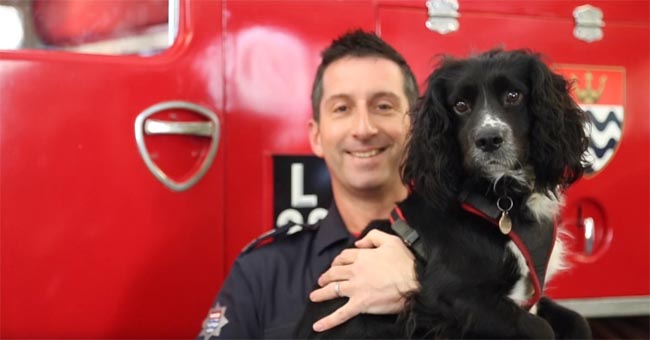
Our fire investigation team uses our four-legged friends to sniff out the causes of fire, helping keep costs down and speed up the whole process.
The Brigade has three specially trained fire investigation dogs that can identify a variety of ignitable substances to assist with criminal investigations and help determine whether a fire has been started deliberately.
Paul has over 19 years' experience in the fire service, originally joining Kent Fire and Rescue Service before transferring to London in 2005. He moved into our fire investigation department in 2011.
Speaking about the important work fire investigation do, Paul said: "There is no hidden agenda and we aren't out to blame anyone. We are just here to help make sure people are safe.
"We provide facts and identify the most probable cause of fires - which is why the dogs are so useful.
"They [the fire investigation dogs] help indicate whether an ignitable liquid has been used within a fire or to rule it out.
10 target substances
"Sherlock is trained to identify the presence of 10 ignitable liquids, ranging from acetone to petrol, whether neat, evaporated or burnt. These are known as his 'target substances'.
"He will identify an area of interest, which is then documented before samples are taken by a police scenes of crime officer for analysis."
Our fire dogs are selected at a young age based on their drive for play and follow a positive reinforcement training programme, which rewards them with a tennis ball each time they detect an ignitable substance.
When investigating fire scenes, our dogs wear boots to protect their paws from any shards of glass or other sharp objects and, although it might look dangerous, the dogs are never sent into hot scenes and there has been no report of any injury to any fire dog throughout the country.
Our fire investigation dogs attend between 180 - 230 incidents a year.
Reducing costs while improving accuracy
Paul added: "There's currently 18 fire investigation dogs in use across the country that all undertake the same role: identifying if an ignitable liquid has been present whether burnt, evaporated or neat.
"They can identify much smaller amounts than the portable equipment we carry and they can do it much quicker.
"The dogs assist with our fire investigation, resulting in a higher level of accuracy and conviction rate of deliberately set fires, where an ignitable liquid has been used.

"They reduce the time we spend at a scene and reduce the costs in processing samples, where an accelerant has been positively identified, due to the dogs being able to accurately search a large area in a short space of time.
"They also bring other benefits to the team such as acting as a visible deterrent against would-be arsonists or being great ambassadors for the Brigade when they go to community safety events or fire station open days."
